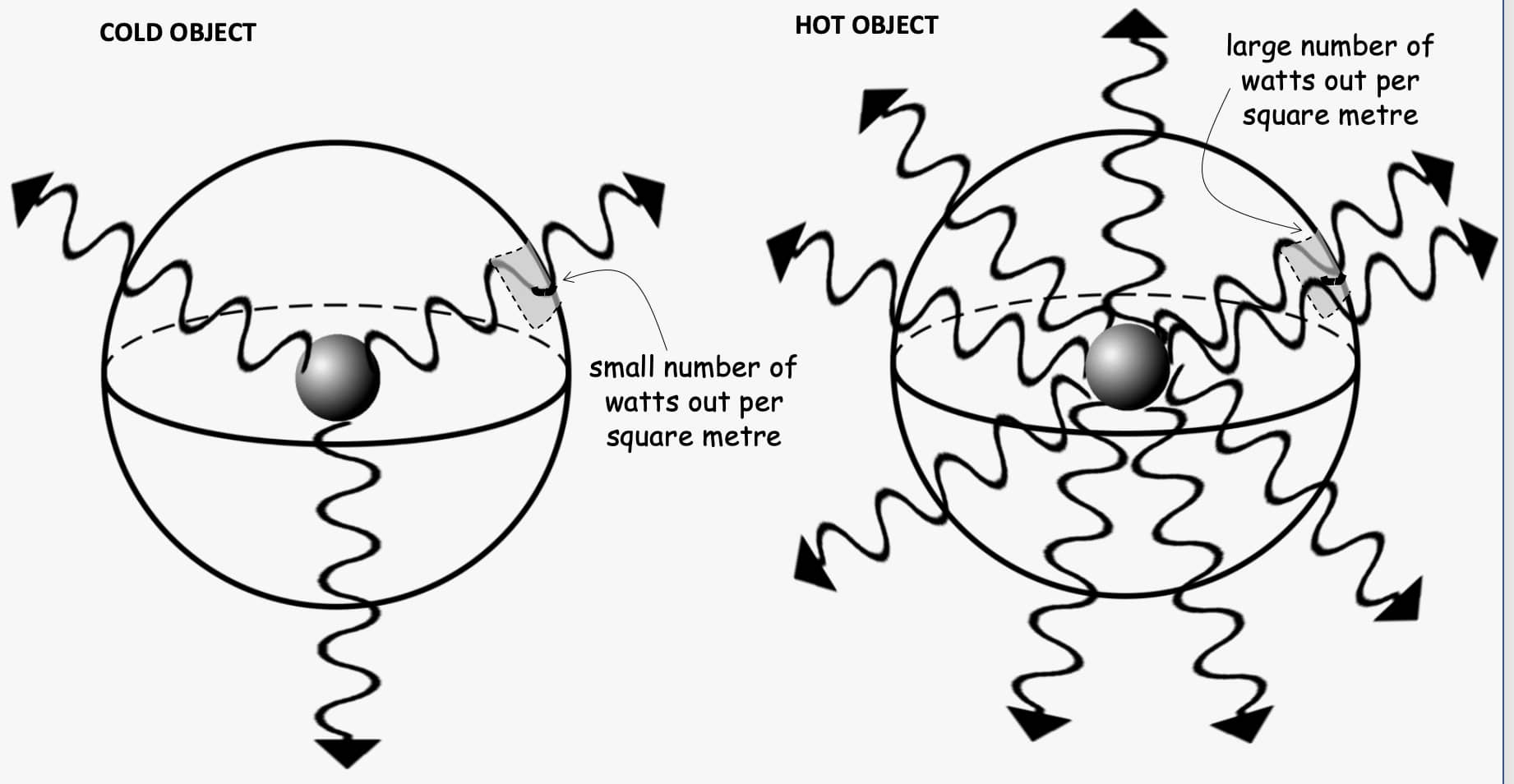
The study of blackbody radiation has been a fundamental concept in physics for centuries. At the heart of this field lies Planck’s law, which revolutionized our understanding of how objects emit and absorb radiation. Max Planck’s groundbreaking work in the early 20th century laid the foundation for quantum mechanics and earned him the Nobel Prize in Physics in 1918. Planck’s law describes the spectral distribution of electromagnetic radiation from a blackbody at a given temperature. It is a cornerstone of modern physics with applications in various disciplines, including astrophysics, spectroscopy, and thermal imaging. In this article, we will delve into the intriguing world of Planck’s law and explore nine fascinating facts about this remarkable concept. Prepare to be amazed by the beauty and complexity of this fundamental principle!
Key Takeaways:
- Planck’s Law of Blackbody Radiation revolutionized physics by introducing the concept of quantization, leading to the birth of quantum theory and resolving inconsistencies in classical physics.
- Max Planck’s groundbreaking work not only shaped our understanding of the quantum world but also paved the way for technological advancements, including lasers and solar cells, based on the law’s principles.
The Birth of Quantum Physics
Planck’s Law of Blackbody Radiation played a pivotal role in the development of quantum physics in the early 20th century. It provided a theoretical foundation for understanding the behavior of electromagnetic radiation emitted by objects at different temperatures.
Max Planck and the Origin of the Law
The law is named after the German physicist Max Planck, who formulated it in Planck introduced the concept of quantization, suggesting that energy can only be emitted or absorbed in discrete packets known as quanta.
Explaining Blackbody Radiation
Planck’s Law describes the spectral distribution of radiation emitted by a perfect blackbody—a hypothetical object that absorbs all incident radiation without reflecting or transmitting any. It provides a mathematical equation that gives the intensity of radiation at different wavelengths and temperatures.
Relationship Between Temperature and Radiation
The law reveals an intriguing relationship between the temperature of a blackbody and the spectrum of radiation it emits. As the temperature increases, the peak of the emitted radiation shifts to shorter wavelengths, resulting in a higher intensity of shorter-wavelength photons.
Bridging the Gap with Classical Physics
Planck’s Law resolved an inconsistency between classical physics and experimental observations. Classical physics predicted that the intensity of radiation at higher frequencies would increase without limit, known as the “ultraviolet catastrophe.” However, Planck’s quantum approach successfully explained the observed behavior.
The Birth of Quantum Theory
Planck’s formulation of the law laid the foundation for the development of quantum theory by demonstrating that energy is quantized. This groundbreaking concept revolutionized our understanding of the behavior of particles at the atomic and subatomic levels.
Applications in Astrophysics
Planck’s Law has extensive applications in astrophysics for studying the radiation emitted by celestial objects. Astronomers use the law to determine the temperature, composition, and other properties of stars and galaxies based on their observed radiation spectra.
Quantum Mechanics and Planck’s Constant
Planck’s constant, denoted as h, is a fundamental constant in quantum mechanics. It determines the relationship between the energy and frequency of a quantum system, making it an essential component of various equations in quantum physics.
Revolutionary Impact on Technology
The concepts derived from Planck’s Law have influenced various technological advancements. The development of lasers, solar cells, and other devices relies on our understanding of the quantum nature of radiation and its interaction with matter.
The 9 Fascinating Facts About Planck’s Law of Blackbody Radiation shed light on the profound impact of Max Planck’s groundbreaking work in developing our understanding of the quantum world. From revolutionizing physics to practical applications in various fields, Planck’s Law continues to shape our modern scientific and technological advancements.
Conclusion
In conclusion, Planck’s Law of Blackbody Radiation is a fundamental concept in physics that describes the radiation emitted by a blackbody. It provides insights into the spectral distribution of emitted radiation at different temperatures and wavelengths. Understanding this law is crucial in various fields, including astrophysics, cosmology, and quantum mechanics. By explaining how the energy of radiation is quantized, Planck’s Law revolutionized our understanding of the interaction between matter and electromagnetic radiation.This law’s significance is evident in its applications, such as determining the temperature of stars based on their emission spectra and explaining the phenomenon of blackbody radiation. Planck’s Law has played a crucial role in various scientific advancements and continues to be a cornerstone in modern physics.In summary, Planck’s Law of Blackbody Radiation is a fascinating concept that has revolutionized our understanding of the behavior of electromagnetic radiation. Its implications and applications are vast, and its contributions to the field of physics cannot be overstated.
FAQs
1. What is Planck’s Law of Blackbody Radiation?
Planck’s Law of Blackbody Radiation is a fundamental principle in physics that describes the spectral distribution of electromagnetic radiation emitted by a blackbody at a specific temperature.
2. How did Planck’s Law revolutionize our understanding of radiation?
Planck’s Law introduced the concept of energy quantization, which proved essential in explaining the spectral distribution of blackbody radiation. It paved the way for the development of quantum mechanics and challenged classical physics theories.
3. What are some practical applications of Planck’s Law?
Planck’s Law is used in various fields, such as astrophysics, to determine the temperature of stars based on their emission spectra. It is also applied in the study of thermal radiation, quantum mechanics, and the understanding of the cosmic microwave background radiation.
4. Can Planck’s Law be applied to objects other than blackbodies?
While Planck’s Law specifically describes the radiation emitted by a blackbody, its principles have been extended to objects that approximate blackbodies. This allows for the analysis of various objects in terms of their emitted radiation spectra.
5. What role does Planck’s Law play in the study of cosmology?
Planck’s Law is instrumental in studying the cosmic microwave background radiation, which is a remnant of the early universe. By analyzing the radiation spectrum, scientists can gain insights into the conditions shortly after the Big Bang.
Planck's Law of Blackbody Radiation revolutionized our understanding of physics, paving the way for groundbreaking discoveries. If you're curious about blackbody radiation and its fascinating properties, our article "10 Astounding Facts About Blackbody Radiation" is a must-read. For those intrigued by the quirks of quantum mechanics, "19 Unbelievable Facts About Quantum Mechanics" will satisfy your curiosity. And if you want to dive deeper into the fundamental constants that shape our universe, "17 Intriguing Facts About Planck's constant" is the perfect place to start. Embark on a journey through the captivating world of physics and uncover the secrets that have transformed our understanding of reality.
Was this page helpful?
Our commitment to delivering trustworthy and engaging content is at the heart of what we do. Each fact on our site is contributed by real users like you, bringing a wealth of diverse insights and information. To ensure the highest standards of accuracy and reliability, our dedicated editors meticulously review each submission. This process guarantees that the facts we share are not only fascinating but also credible. Trust in our commitment to quality and authenticity as you explore and learn with us.


